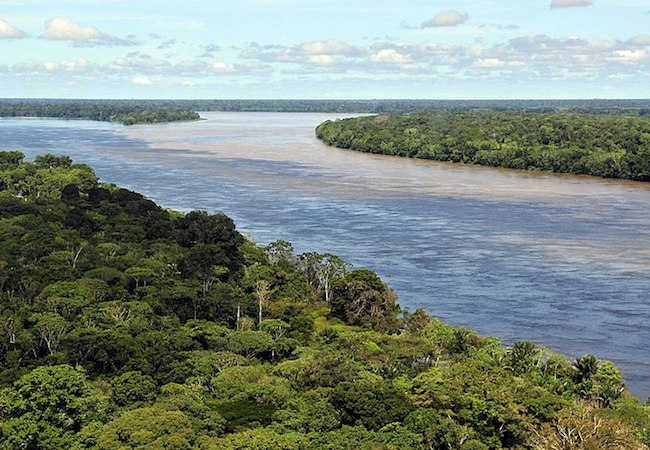Why environmental destruction in Latin America is a threat to U.S. interests

By Kamelia Kilawan
When an endangered sea mammal, the rarest of its kind, like Baja’s vaquita also known as the “senorita of the sea” faces threat of extinction, it is difficult for conservation groups and government authorities to look away from strategies to save the species. In 2017 the Mexican government declared a complete ban on the use of gill nets, the killing tool of illegal fisherman, known for capturing vaquitas in mass.
What is spurring the demand for the animal? It’s their large swim bladder. Despite having no proven scientific benefits, in China, the demand for fish bladders has grown. A report from the U.S. Justice Department found the bladders of the Totoaba, a similar and also endangered Mexican sea mammal, “highly prized” in some Chinese soups.
The business of fish bladders has attracted organised crime and has evolved into a lucrative black market in Mexico. The vaquita’s bladder can go for up to $10,000 USD and in 2013 the U.S. Fish and Wildlife Agency seized more than 200 bladders from a house in Calexico worth more than $3.6 million.
Some scientists believe there are just 15 vaquitas left in the seas. In response to the impending doom for the species and others of its kind, a U.S. trade court has ordered the Trump administration to ban all seafood caught by gill nets in Mexico under the Marine Mammal Protection Act.
Swift action was taken to conserve Mexican sea mammals, but how can foreign aid and legal frameworks protect against species in South America that are not quite endangered, but especially vulnerable? Is it possible to persuade foreign governments to support existing conservation projects and efforts to root out not just the illegal wildlife trade but the complex system of illegal logging?
Take the black spider monkey—also known as the Guiana or red-faced spider monkey— found in areas north of the Amazon River and the largest primate species in South America. Deforestation threatens these creatures by rapidly reducing their habitats. While much of the logging in Brazil is determined legal, the challenges of illegal logging persist in the Amazon rainforest, the single largest remaining tropical rainforest in the world, according to the World Wildlife Fund.
Last year Brazil launched a database to fight illegal logging in the Amazon. The system known as Sinaflor, uses satellite mapping to tag individual trees as they are cut down and marked as legal by matching them to the licensed source in which they are claimed to be produced. Despite accolades from environmentalists on the sophistication of the database, many still accuse the Brazilian state of allowing illegal loggers to keep logging in the Amazon. The problem extends not just to conservation. Some officials call illegal logging organized crime and other campaigners worry the practice is opening a door for violence stemmed by land conflict.
In a 2014 report on Brazil’s response to illegal logging, Chatham House, an NGO based in London, cites the need for the country to develop bilateral agreements specifically on illegal logging with countries that consume its wood. According to the World Bank’s 2016 data on wood exports, Brazil exports most of its wood to China, the United States, the Netherlands, Italy and Argentina.
In 2008 the U.S. amended its conservation law, the Lacey Act, to prohibit the import of any product made from illegally logged wood after a study commissioned by the American Forest and Paper Association estimated that illegal logging costs the U.S. forest products industry $1 billion annually in missed export opportunities and the depression of U.S. wood prices. The passage of this amendment was considered a watershed moment and contributed to a reduction in the import of illegal wood in the U.S., but it did not eradicate the issue. A 2015 study by the Union of Concerned Scientists found the 2008 Lacey Act amendment has not prevented all U.S. imports of illegally sourced wood. And in 2013 alone, the study found illegally logged wood imports to the U.S. were estimated to have been worth $2.8 billion.
Currently USAID is working with Brazil’s government, private sector, and its indigenous communities to improve biodiversity conservation and understand deforestation in the Amazon through innovative approaches like this one by Rainforest Connection, a non-profit tech startup in San Francisco. Still there has been little if any aid from the U.S. that has stopped illegal logging in Brazil’s Amazon (home to 60 percent of the Amazon rainforest).
The intersection of national security interests, domestic industries, and environmental considerations is why members of Congress such as Alabama Senator Richard Shelby are supporting foreign assistance for conservation in the FY 2018 budget. Relatively small increases in foreign aid to allies like Brazil can go a long way to rooting out practices that not only poses a threat to security but also the Amazon rainforest, home to animals like the black spider monkey that could face extinction in future generations.
Kamelia Kilawan is a journalist and digital producer based in Washington, DC focusing on issues in the Caribbean and Latin America.




